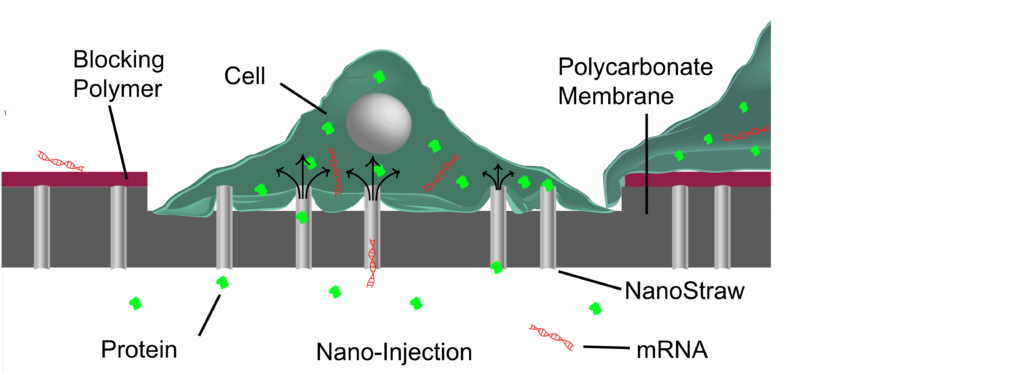Nano-Injection Addresses Viral and Non-Viral Transfection Limitations
NanoStraws are born from conventional polymeric track-etched cell culture membranes. Membranes are coated with alumina and etched to produce fields of NanoStraws, of which the geometric parameters (diameter, thickness, and height) are fully controllable.
By piercing through membranes of cells, NanoStraws provide a pipeline for the diffusion of biomolecules directly into the cytosol.
To ensure delivery of charged cargo such as DNA plasmids, RNA strands, and proteins into the cells, a tiny electric field is applied to locally and temporarily destabilize the lipid bilayer in contact with the NanoStraws. Very low pulses are utilized in this process, which mobilizes the cargo, driving it into the cell in a dosage-controlled fashion.




